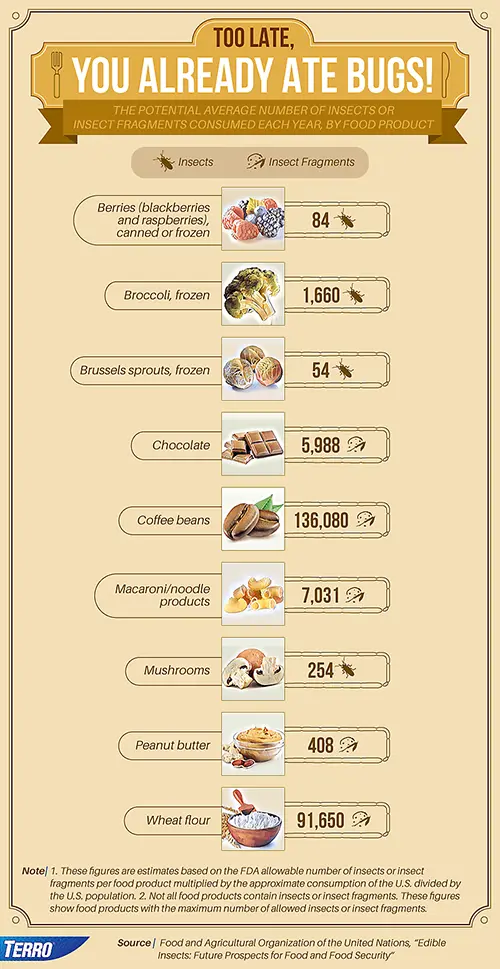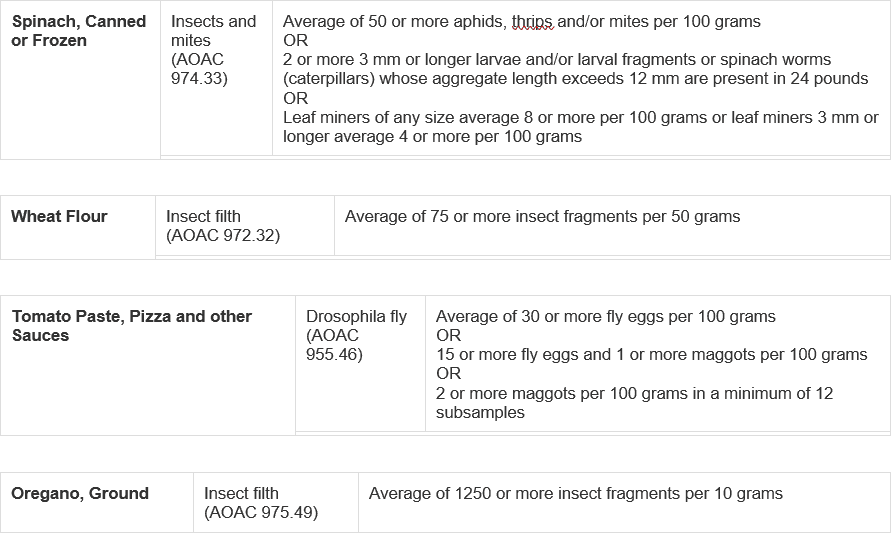
During my research I came across this study published by Terro, titled Consuming Creepy-Crawlers that examines insects in food around the world. Warning to all insect-sensitive people! You may not want to read the full text, so I’ll start by sharing these infographics with you and you can decide for yourself:




Check out the full FDA list here.
Amazing, right? But don’t be discouraged yet. These, are after all, APPROVED for a reason. In the FDA explanation you will learn that these numbers are not hazard for our health and safety. To approve a certain amount of insect consumption, that is not harmful, was the only option that is economically and financially easier for these companies. We can hope, as technology progresses, these numbers will minimize in years that follow.
Now let’s look at the bright side. Yes, there is one. If you are eating insects, you are eating many healthy ingredients as well. According to Terro, mealworms, crickets, and houseflies boast the highest protein and that is just one small part of it. Check out another great infographic that shows all the nutrition values of insects vs. meat and fish:

You can expect to feel numerous health benefits. Here are a few vitamins and minerals you’ll get from cricket protein: B12, Magnesium, Zinc, Calcium, essential Amino Acids, Omegas, Iron, etc. Crickets are incredibly sustainable to our planet. Recent projections by the World Health Organization (WHO) predict that on average each person will consume 45kg of meat per year in 2030, up from 36kg at the end of the 1990s. Raising these animals for consumption can be very detrimental to our environment. The livestock sector accounts for 18% of all Greenhouse emissions. Limiting your consumption of beef and other meats can not only help our environment but will also help improve your health!
We leave you to do the math and we invite you to think twice before saying NO to eating insects, especially nutritious and sustainable ones like crickets. If you are eating insects already, why not you consider eating them willingly? Knowing that you are doing something good for your body and your planet. If you can’t imagine eating whole fried, or cooked cricket, you don’t have to! They are not the only option. They are being processed to produce valuable protein powder that is used to make so many healthy products.

Don’t say NO to insects just yet. There is much to learn. Eventually, they may be one of our solutions to solve world hunger and our planet.





